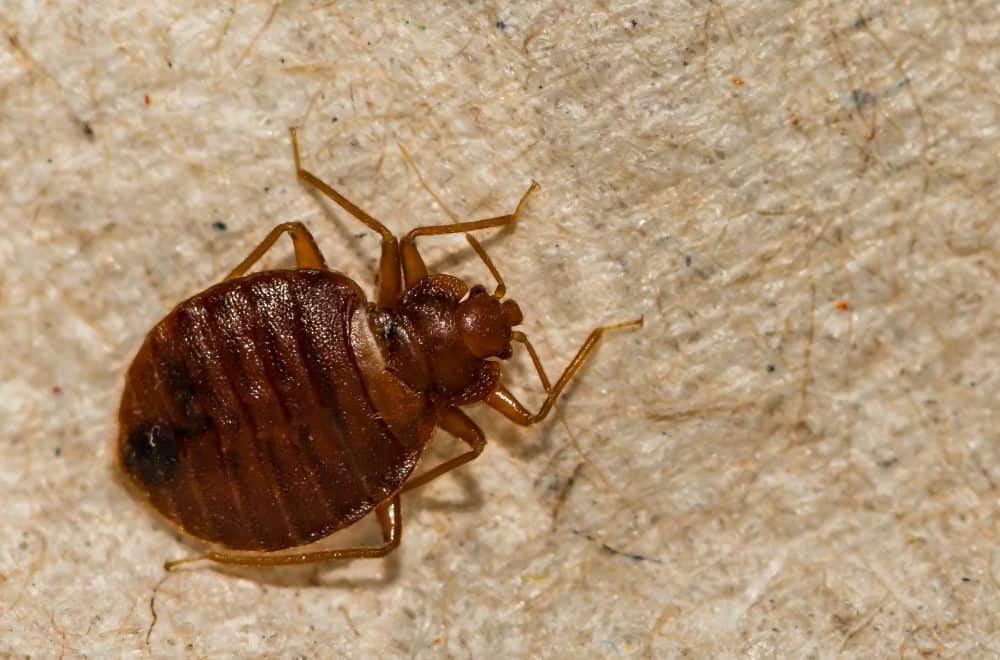There’s nothing worse than being in the middle of taking a nice hot shower when you suddenly notice the grout around you is crawling with bugs – but this is the kind of thing that can happen if you don’t keep on top of your bathroom cleaning routine.
But what are they? How did they get there? And more importantly, how can you get rid of them? To help you understand the answers to these questions and more, in this post, we give you all the info you need about tiny bugs in shower grout.
Tiny Bugs in Shower Grout – What are they?
If you notice tiny bugs on your shower grout, they could belong to several common species that often invade our bathrooms – and here are the most likely culprits.
1. Grout mites
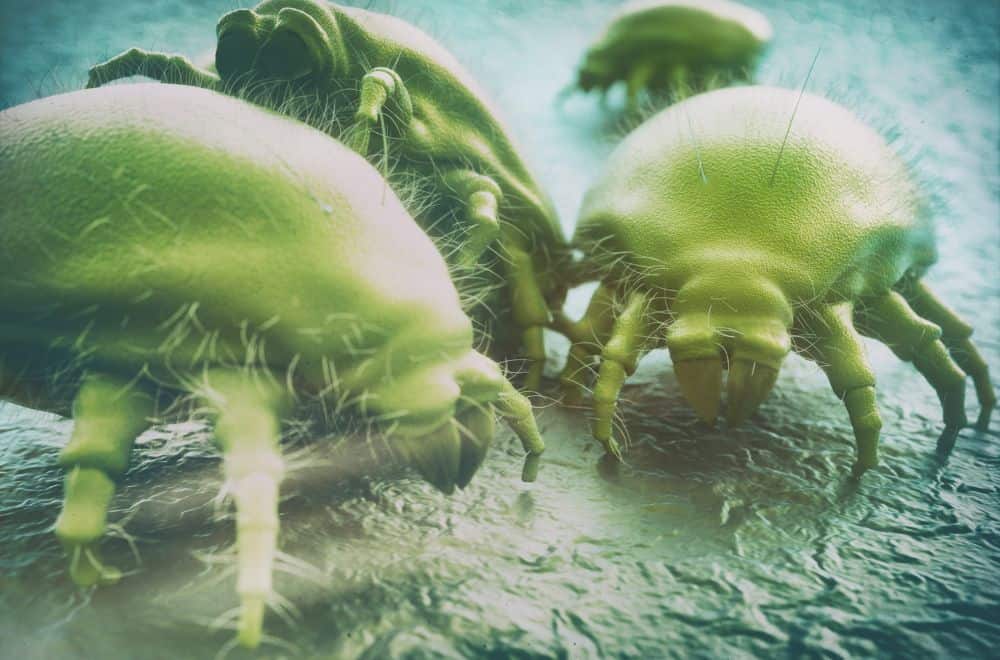
Grout mites, also known as mold mites, are minuscule, almost microscopic white bugs that are most commonly found in the grout in showers, hence the name.
Mites are arachnids, which means they’re related to spiders – as well as scorpions – but these animals are not dangerous in any way.
However, they’re still most unwelcome in our shower grout since showers are where we go to get clean, and it’s pretty gross to be surrounded by bugs while we’re trying to wash.
These bugs are attracted to the grout in our showers, especially if we don’t stick to a regular cleaning schedule, because they graze on the mold and mildew that grows on grout if we don’t wash it often enough.
This also means they’re also attracted to any other damp or humid areas where mold is allowed to grow – and if other areas of your house start to develop mold, they can also be found there.
2. Psocids
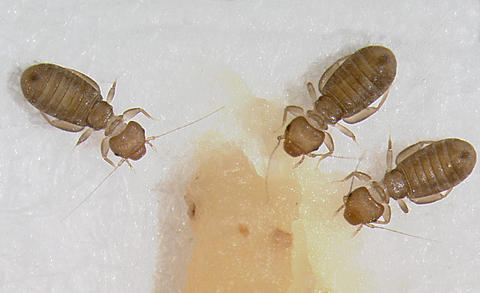
Image Credit: extension
Another species you may encounter in your bathroom around the grout are what are known as psocids. There are many species of psocids – in fact, there are over 5,500 species – but the ones you’re likely to see in your bathroom are the ones commonly known as booklice.
However, the term “booklouse” isn’t a scientific one and may refer to several species of psocids that are found inside people’s homes.
Unlike grout mites, which are arachnids, psocids are insects, which means they have six legs instead of eight. Some species of booklice have wings while others don’t.
At about 1-2mm in length, they are bigger than grout mites, and at first glance, they may look like small, pale ants.
Booklice are so named since they eat starch, which they can get from eating the glue from the bindings of old books. They can also eat dry, starchy food from your store cupboard, but if you find them in the bathroom, they are there for the mold growing on your grout.
As a result, if you find psocids in your bathroom, you can treat them in the same way as grout mites.
This is because, although they are different species, they are feeding on the same thing, getting rid of them will require the same techniques, and preventing them from returning will also entail the same actions.
We’ll talk about the details of how to do this later in this post.
3. Drain flies
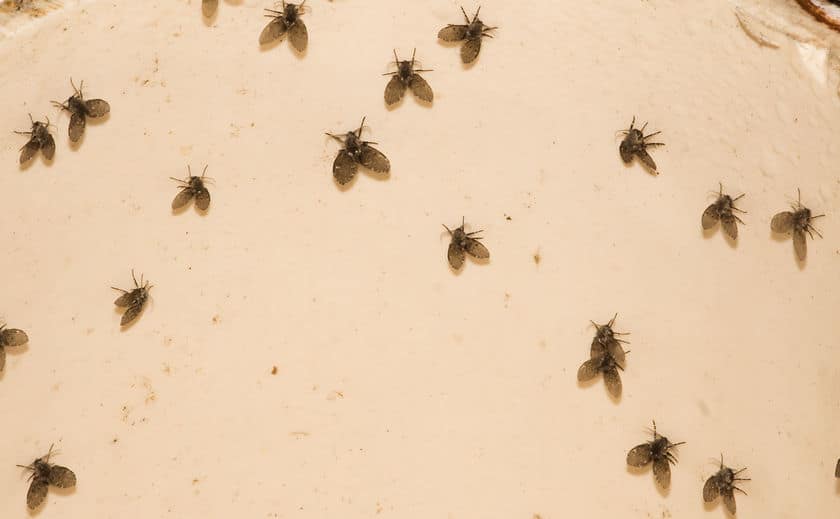
Image Credit: whywait
Drain flies are quite different from either grout mites or psocids – they are not there for the mold growing on your grout, and dealing with them will require different actions too.
Many people will have seen drain flies in their bathroom at some point, and they usually indicate that there’s a problem with the plumbing somewhere.
Drain flies usually breed in drainpipes, laying their eggs in organic matter that has started to decay.
This means a blockage may be developing in your drainpipe, and it may also tell you that if the problem gets worse, it may eventually become completely blocked, which is something else you’ll have to deal with.
On the other hand, they can also breed in the sewer and then make their way up the plumbing into your bathroom.
Drain flies are easy to distinguish. They look exactly like what they are – tiny black flies with wings that will usually be spotted in the bathroom.
4. Drain fly larvae
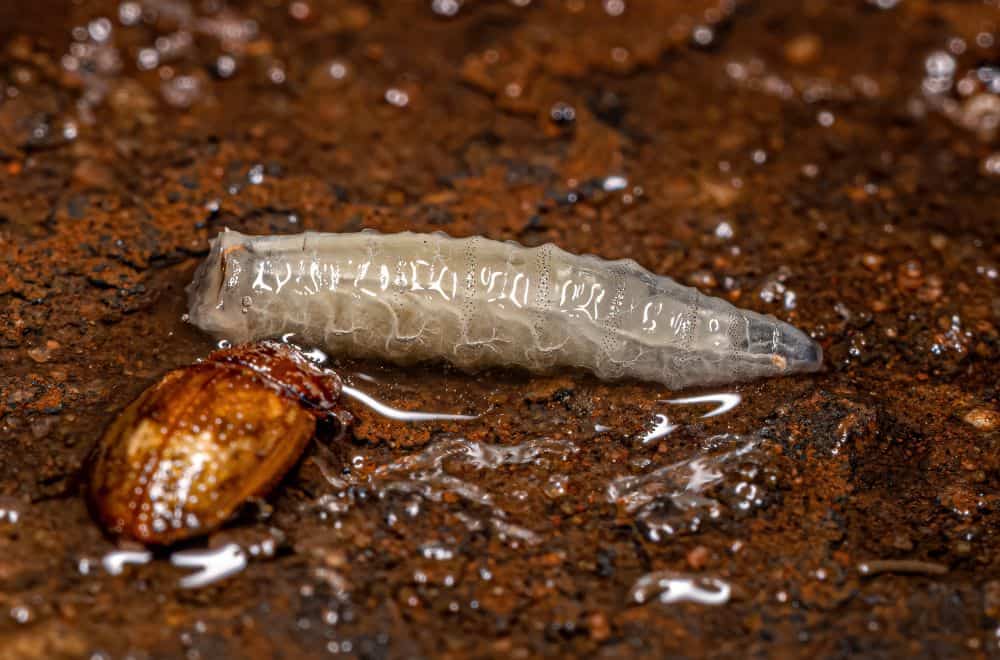
If you notice tiny worms wriggling about on the grout in your shower, they are most likely to be drain fly larvae. To identify them, look a bit closer, perhaps with a magnifying glass, and you will see that they are brown or black at the ends and lighter in the middle.
We just mentioned above that drain flies usually lay their eggs on decaying matter in your drainpipe, but they will also lay eggs on the kind of mold that is found in your shower grout.
They also turn up around the drain hole in the slimy film that sometimes develops there.
If you spot these bugs in the grout around your shower, you can deal with them using a combination of what you would do for grout mites or psocids and drain flies.
And it has to be said, if you have drain fly larvae in your bathroom, your bathroom cleaning routine probably leaves something to be desired, so once you’ve dealt with the infestation, you’d do well to be more assiduous with your cleaning in future.
How can you get rid of Tiny Bugs in Shower Grout?

If you notice small bugs in your grout, you’ll first need to identify them. This will allow you to deal with the infestation – and then once you’ve killed all the bugs, you can then think about future prevention.
Step 1. Identification
The first step in dealing with the infestation is knowing your enemy. However, identifying which of the four types of bugs we’ve mentioned above is simple.
If the creatures are tiny, white, bulbous and only just visible to the naked eye, you’re dealing with grout mites. To confirm this, you can take a magnifying glass for a closer look, and you’ll easily be able to see what you’re dealing with.
On the other hand, if the bugs are slightly bigger and easier to see, they are likely to be psocids. They have an ant-like appearance, they have six legs and may or may not have wings.
In any case, if you still can’t distinguish between grout mites and psocids, it doesn’t really matter because you’re going to deal with them both in the same way anyway.
On the other hand, you’ll know if you’re dealing with drain flies due to their wings and obvious fly-like appearance – while drain fly larvae look like wriggling little worms.
Step 2. Killing grout mites, psocids and drain fly larvae in grout
If you’ve established that you’re dealing with grout mites, psocids or drain fly larvae, you can move on to the extermination phase – which will be the same for all three.
To do this, you have several options, but most are more or less the same – and the only difference is the product you choose to use.
The simplest way to kill all the bugs in your shower is just to give it a thorough clean with bleach. This will ensure any bugs crawling around in your grout will be destroyed.
However, another option you might try if you don’t want to use anything as harsh as bleach is borax and water mixed into a paste and spread over the grout in the shower. Diatomaceous earth will also kill all the bugs.
Once you have applied the treatment, you can then rinse your shower down using the shower head.
Step 3. Dealing with drain flies
The most common reason for having drain flies in your bathroom is that the drain from your shower or sink is developing a blockage.
You might not realize this yet since the water is still draining normally, but the drain flies are breeding in your drain and laying their eggs in the organic material there.
As a result, all you need to do to solve the problem is dislodge the blockage, which could be just below the stopper on the drain hole or further down the pipe.
To find out which drain is blocked, place some duct tape over the drain holes in your shower, bathtub and basin and leave it there overnight – or for 24 hours if possible.
Then when you remove it, check below to see if you have caught any drain flies – if you have caught several flies from one of the holes, you’ll know that’s where the infestation is coming from.
Next, remove the stopper from the affected drain hole and hook out any hair and scum that has become lodged there. If there was quite a lot, this will probably resolve the problem.
However, you may also need to use a plunger or even a plumber’s snake to dislodge a blockage further down.
After the blockage is dislodged, you shouldn’t have any more problems with drain flies breeding.
How to Prevent Tiny Bugs in Shower Grout return
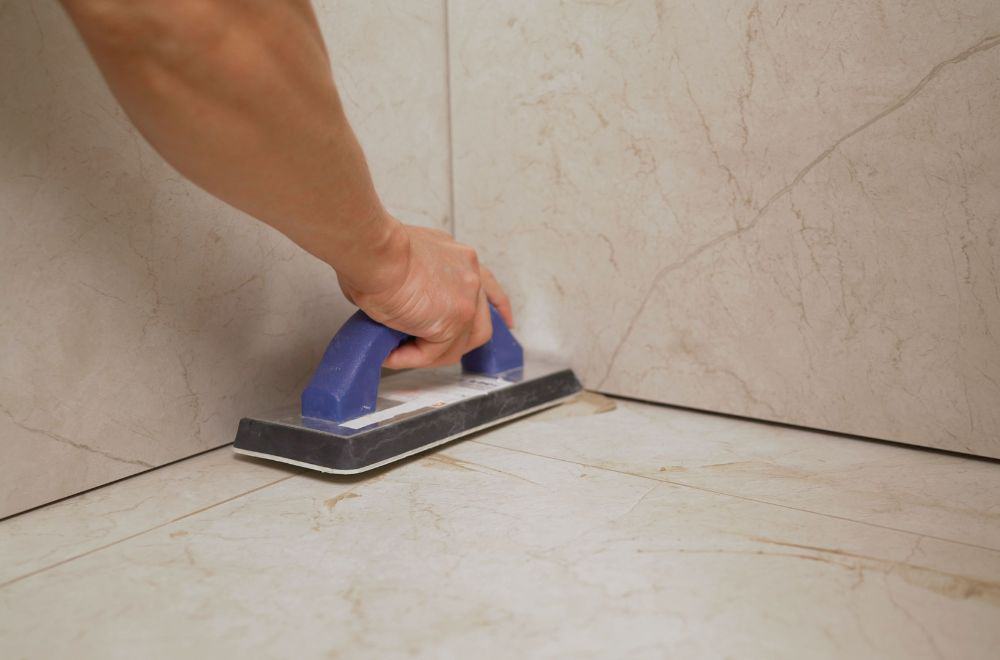
Having killed the pests that caused your infestation, you now need to turn your thoughts to why they were there in the first place – and how you can prevent them from coming back.
Preventing drain flies from returning is simply a matter of keeping your drains clear – but to keep grout mites and psocids away – and to prevent drain flies from laying eggs in your bathroom – you’ll need to clean your bathroom thoroughly and then keep it clean.
Here’s what to do.
1. Clean all grout with an effective cleaner
You need to start by removing all the mold from your grout since this is what the mites, psocids and larvae were feeding on.
A good option for this is to use vinegar and bicarbonate of soda. Start by mixing up a paste of vinegar and bicarbonate of soda and then apply it generously along all the lines of grout in your shower.
Leave it to act for at least half an hour – but preferably at least two hours – and then return and rinse it off with warm water.
You should then wipe the grout clean with a sponge and warm water, scrubbing a little with a soft brush if need be.
Check the results, and if the grout is clean and free of mold, you can move on to the next step.
If not, repeat the process and see if the result is better.
Tip: If you clean your grout two or three times as described above but still can’t remove all the mold, you might be better off removing the grout and installing new grout in its place.
This will probably be a bit of a pain – but this should motivate you to keep it clean in future!
2. Reduce moisture in your bathroom
Part of the reason your bathroom developed mold was that bathrooms are naturally hot, humid places where mold grows easily.
As a result, you should do what you can to reduce the humidity in your bathroom.
To do this, think about leaving the window open more to air the room, remove damp towels after use and dry the shower after washing. You may also consider installing a dehumidifier.
3. Instigate a regular, thorough cleaning schedule
Even if you dehumidify your bathroom, mold will still grow if you don’t clean it regularly – but if you clean it often enough, mold won’t have a chance to grow, even if the humidity is high. As a result, cleaning your bathroom thoroughly at least once a week is key.
This way, mold won’t have a chance to grow – and the pests that love to dine on it will have to find somewhere else for a meal.
This will prevent gout mites and psocids from taking up residence in your bathroom, and it will also prevent drain flies from laying their eggs on your grout.
If your problem was with larvae, having cleaned the grout and having deblocked your drains, you should also have seen the end of tiny worms crawling about in your bathroom.
Prevention is better than cure
Since none of these bugs will make a home in your bathroom if you keep it spotless, make sure you stick to a regular cleaning routine and they will never turn up in the first place – after all, prevention is better than a cure.
However, if you do spot bugs in your bathroom, first identify them, then kill them – then make sure you clean your bathroom thoroughly and keep it clean so they never come back.
